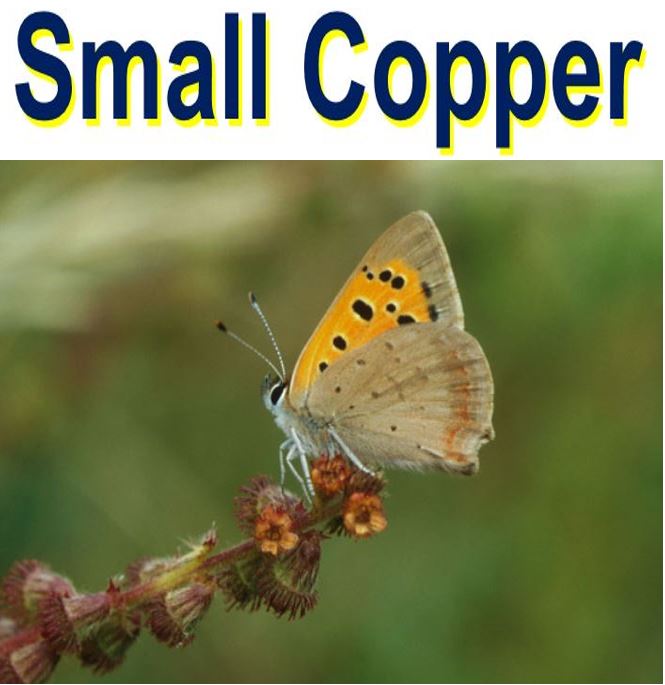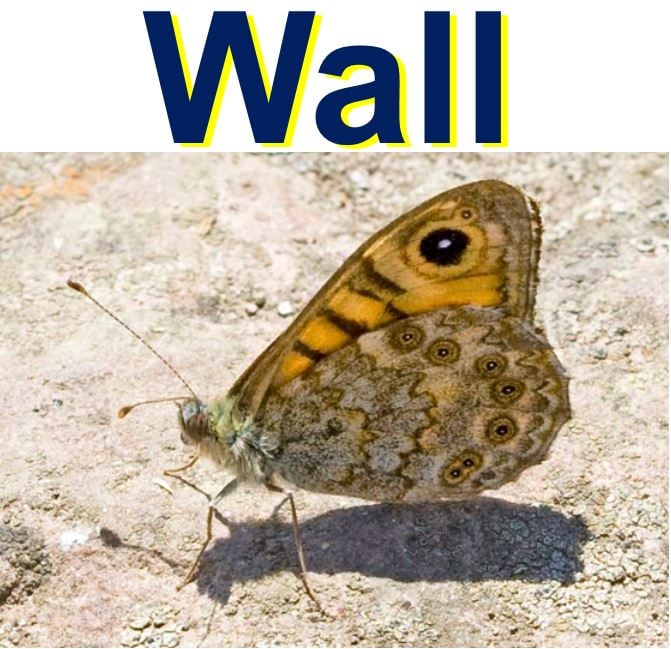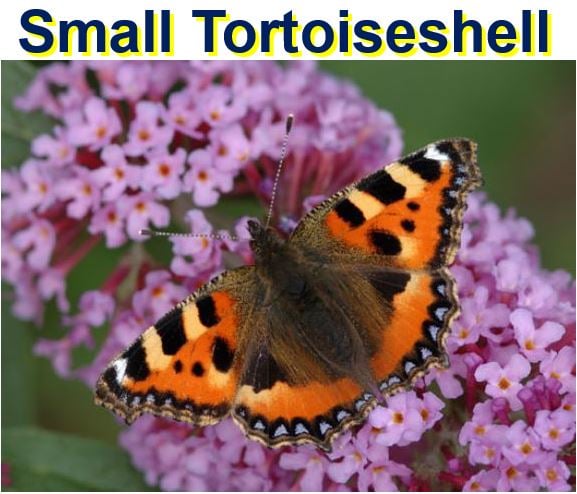The Small Copper and Wall butterflies saw significant declines in their UK populations in 2015, a saddening trend that started about forty years ago, according to Butterfly Conservation, a British insect conservation organisation. Most British butterfly species have seen their numbers fall over the past few decades.
Compared to 2014, last year the Small Copper butterfly’s population fell by nearly one quarter, mainly because it was a cooler-than-average summer.
Butterfly Conservation, together with the Centre for Ecology and Hydrology, report that relatively poor weather in the past few years has been bad for butterflies.
 The Small Copper (Lycaena phlaeas) is generally seen in ones or twos, with larger numbers possible at good sites. Males are very territorial, often selecting a piece of bare ground, or a stone on which to bask and seek a mate. Butterfly Conservation says: “Though it remains a common and widespread species, the Small Copper declined throughout its range during the twentieth century. Widespread through Britain and Ireland, and occasionally visits gardens.” (Image: butterfly-conservation.org)
The Small Copper (Lycaena phlaeas) is generally seen in ones or twos, with larger numbers possible at good sites. Males are very territorial, often selecting a piece of bare ground, or a stone on which to bask and seek a mate. Butterfly Conservation says: “Though it remains a common and widespread species, the Small Copper declined throughout its range during the twentieth century. Widespread through Britain and Ireland, and occasionally visits gardens.” (Image: butterfly-conservation.org)
Bad weather plus habitat loss
Add to this cooler weather their ever-growing problem of habitat (traditional meadow) loss, and the future for British butterflies looks bleak, say conservationists.
In 2015, most common and rare butterflies in the UK struggled as a result of an abnormally dry spring followed by the wettest and coldest summer since 2011.
The Small Copper and Wall were not the only butterflies to suffer their worst year since records began – Heath Fritillaries had a very bad year too, with numbers declining by about 16% to an all-time low.
Rare British Swallowtails saw their numbers drop by nearly two-thirds in 2015 compared to the previous year, while the Small Tortoiseshell plummeted by 44%.
 According to Butterfly Conservation, the Wall (Lasiommata megera) is found around the UK coast, as far north as southern Scotland. This butterfly is aptly named after its habit of basking on rocks, walls and stony places. In hot weather, males patrol high and low over the ground, looking for a mate. In cooler weather they tend to bask in sunny areas and fly up to intercept females and scare off male rivals. (Image: butterfly-conservation.org)
According to Butterfly Conservation, the Wall (Lasiommata megera) is found around the UK coast, as far north as southern Scotland. This butterfly is aptly named after its habit of basking on rocks, walls and stony places. In hot weather, males patrol high and low over the ground, looking for a mate. In cooler weather they tend to bask in sunny areas and fly up to intercept females and scare off male rivals. (Image: butterfly-conservation.org)
Head of Monitoring at Butterfly Conservation, Dr. Tom Brereton, said
“In recent years it has become apparent that some of our most familiar and cherished butterflies are declining substantially. Sadly, our latest results show that the diminutive but stunning small copper can be added to this list.”
Calling on British gardeners for help
The more extensive and thorough our long-running studies can be, the better we will become at saving our butterflies, says Butterfly Conservation.
While we know a great deal about these insects in their natural habitats, data on butterfly populations in British gardens is much more limited.
The Garden Butterfly Survey, a recently-launched project, will try to lift the lid on how our garden butterflies are faring across the country.
 The Heath Fritillary (Melitaea athalia) has historically been associated with the traditional practice of woodland coppicing, giving it the nickname of the ‘Woodman Follower’ because it follows the cycle of cutting around a wood. Regarding this species, Butterfly Conservation writes: “Sadly it is now one of our rarest butterflies but has been saved from the brink of extinction by the concerted action of conservationists.” (Image: butterfly-conservation.org)
The Heath Fritillary (Melitaea athalia) has historically been associated with the traditional practice of woodland coppicing, giving it the nickname of the ‘Woodman Follower’ because it follows the cycle of cutting around a wood. Regarding this species, Butterfly Conservation writes: “Sadly it is now one of our rarest butterflies but has been saved from the brink of extinction by the concerted action of conservationists.” (Image: butterfly-conservation.org)
The survey will tell us which species’ populations are declining, rising or remaining stable, how they are affected by climate change, what kind of plants they prefer, and the best location and size for a butterfly-friendly garden.
Britain has about twenty-two million gardens, which represent an area about the size of Somerset. At a time when butterfly survival is under threat, they offer a potentially vast and vitally important habitat.
The Garden Butterfly Survey is calling on people to count garden butterflies every month of the year. We need to know how climate change is affecting them – there have been several anecdotal reports of some species now flying into the winter.
 The Small Tortoiseshell (Aglais urticae) is widespread across the whole of the UK and Ireland. It is commonly found in gardens. It is one of the best known butterflies in Britain and Ireland. This species is one of the first butterflies to be seen in spring and in the autumn and often visits garden flowers in large numbers. (Image: butterfly-conservation.org)
The Small Tortoiseshell (Aglais urticae) is widespread across the whole of the UK and Ireland. It is commonly found in gardens. It is one of the best known butterflies in Britain and Ireland. This species is one of the first butterflies to be seen in spring and in the autumn and often visits garden flowers in large numbers. (Image: butterfly-conservation.org)
The survey will also tell us whether the trends we have seen in the countryside are echoed in our back gardens.
Head of Recording at Butterfly Conservation, Richard Fox, said:
“We are a nation of gardeners and a nation of wildlife lovers. The Garden Butterfly Survey brings these two abiding passions together to help conserve the UK’s beleaguered butterflies.”
“Butterflies are a beautiful and important part of the UK’s wildlife and our gardens are where they are most often encountered. Despite this, we know very little about how butterflies are faring in our gardens or even how important gardens are as a habitat for them.”
The online survey gathers data on the number, species and time of year that butterflies are seen, as well as important information on British gardens such as geography, size and plant cover.
Video – Garden Butterfly Survey
The Garden Butterfly Survey encourages people across the UK to count garden butterflies every month of the year.
